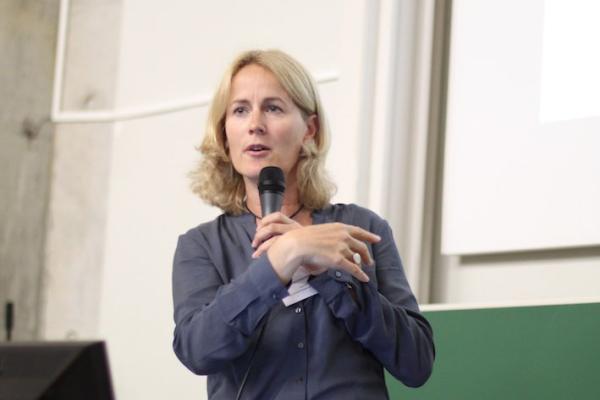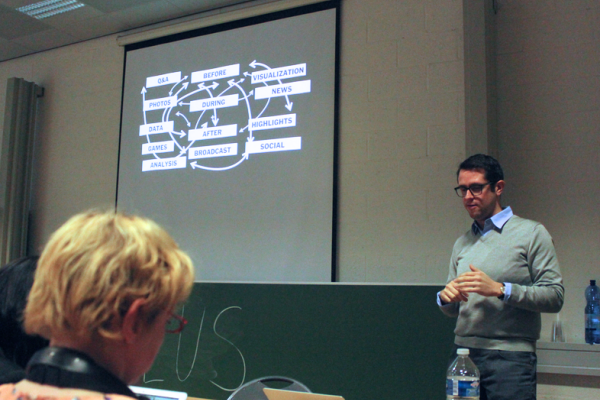The 20-session track focused on how to deal with data, more specifically how to use it, how to present it and how to work with it in a newsroom. Heidi Blake’s opening keynote speech made the packed lecture theatre gasp in admiration of the technical skills used to represent a complicated story about match-fixing.
Presentations and workshops followed. Joachim Weidemann, for instance, discussed how to work with the European Space Agency’s data, while the New York Times’ Rob Gebeloff talked about the data workings of the New York Times newsroom. In a classroom cram-full with enthusiasts the early adopter explained how his data team collaborates closely with the investigative team. Together they figure out how their combined efforts can really have an impact. They also work together with graphic designers and coders. Gebeloff emphasised that a data team should never be an island. The story comes first. Data is there to support it or to follow up on a lead.
Data on TV
And then there are stories for TV that deal with data. How do you go about displaying your story without resorting to the uninspired ‘voice-over plus infographic’ technique?
Both Minna Knus-Galán and Benoît Bringer had this challenge to overcome when they tried to turn data into a visual story. Obviously, when broadcasting a ‘data story’, you cannot film the news happening by turning up to a site where a house is burning or where politicians just leave an important meeting. You have to turn numbers and papers into a visual story yourself. Best advice: think in symbols, locations and people affected by the story that is captured in the numbers and papers.
Knus-Galán learned that filming in a Panamese cadastre may sound boring and not suitable for interesting television, but turned out to be a great representation of the actual tangible consequences of the offshore business. Her French ICIJ colleague Benoît Bringer chose to visit a Panamese lady whose name came up in thousands of Panama Papers files as being the director of all these thousands of firms. The lady lived, to say the least, very modestly; not in any way how you would expect a multi-company-owning lady would live. By filming this, Bringer succeeded in showing the fraudulent nature of the companies.
Building a data desk
In another session no fewer than five European data team leaders talked about how to build a data desk. Katrine Birkedal Frich (DR), Christina Elmer (Spiegel Online), Marcos García Rey (El Mundo), Alexandre Léchenet (Libération) and Helena Bengtsson (The Guardian) showed us how a data department in a newsroom can be a successful one.
A few issues returned in every speaker’s story, and a lot of nodding in agreement happened on stage. All speakers agreed on the fact that the most essential thing you need is backup from the higher ranks. There has to be at least one gutsy editor in the newsroom to get you started. In the case of DR, Birkedal Frich just needed an inspired colleague and a small group of people determined to ‘make something fabulous’. At Libération, Léchenet was told to just have fun. If that’s not a sign of trust, what is?
Rob Gebeloff’s views on the place of the data desk in the newsroom were echoed in this panel, too. A data desk is not an island. Your colleagues should not see you as a service desk for journalists who want you to make an infographic with their story. Data desks should collaborate with the other journalists, make stories together. According to Helena Bengtsson both the biggest hurdle taken and the biggest problem still to be fixed is exactly this; working with the other journalists. The best stories so far have come from good collaborations and still the biggest issue for the speakers was the distrust of the other journalists. You also need some stamina to convince everyone of your use and of the way to work with you. As Bengtsson so poetically said: ‘We have to take them down, one by one, like a sniper’.
So in all, the Data track, much like the Dataharvest/EIJC as a whole, was a track of big stories and inspiration, of motivating people to actually start using data as a means to become better journalists. And isn’t that what people go to conferences for.
By Eva Meesterberends / @EMeesterberends
Photo © Netzwerk Recherche

